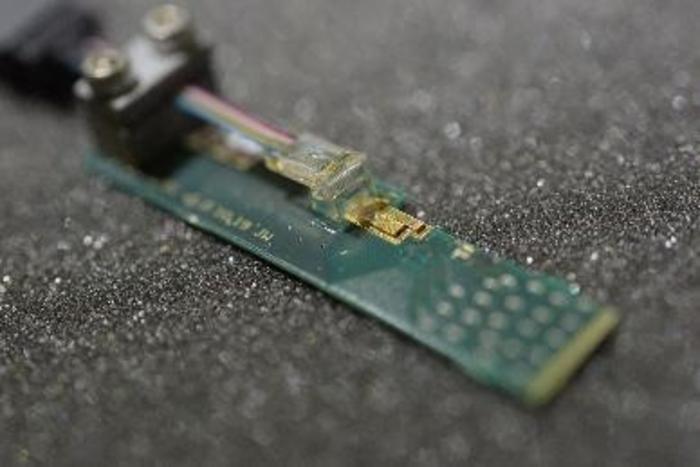
Integrated, High-Speed QKD Broadens Reach of Quantum Security
Quantum key distribution (QKD) provides long-term security for long-distance communications by generating encryption keys based on quantum mechanics. Quantum technology ensures a secure key exchange between sender and receiver.
To industrialize and merge QKD with existing networks, photonic and electronic integration of QKD’s sending and receiving components is necessary. Specifically, a practical, CMOS-compatible QKD setup is needed to manufacture QKD systems in large quantities and at low cost.
A University of Geneva research team led by professor Hugo Zbinden has developed a QKD system based on silicon photonics that can transmit secure keys at a speed of 2.5 GHz. All components in the high-speed QKD system are integrated onto chips except the laser and detectors. The system is compact, low cost, and easy to mass-produce.
In previous work, the researchers achieved QKD transmission at record high speeds by developing a three-state time-bin QKD protocol. They implemented the protocol using standard, fiber-based components.
In the recent work, the researchers sought to implement the same protocol using integrated photonics. According to researcher Rebecka Sax, the ease of manipulation of an integrated system is desirable, as it uses fewer components that must be verified during implementation or troubleshooting in a network. This quality improves the position of QKD as a secure communication technology, she said.
The researchers collaborated with the silicon photonics company Sicoya GmbH and the quantum cybersecurity company ID Quantique to develop a transmitter that combines a PIC with an external diode laser. The transmitter allows for high-speed modulation and accurate state preparation.
The polarization-independent, low-loss receiver chip is made of silica and comprises a PIC and two external single-photon detectors. The QKD receiver was fabricated by Roberto Osellame’s group at the CNR Institute for Photonics and Nanotechnology using a femtosecond laser micromachining technique.

Researchers developed a QKD system based on silicon photonics that can transmit secure keys at high speeds. The QKD transmitter combines a PIC and an IC with an external diode laser. Courtesy of Rebecka Sax/University of Geneva.
“For the transmitter, using an external laser with a photonic and electronic integrated circuit made it possible to accurately produce and encode photons at a record speed of up 2.5 GHz,” Sax said. “For the receiver, a low-loss and polarization-independent photonic integrated circuit and a set of external detectors allowed passive and simple detection of the transmitted photons. Connecting these two components with a standard single-mode fiber enabled high-speed production of secret keys.”
The researchers characterized the transmitter and receiver, and then demonstrated the integrated QKD system by performing a secret key exchange using different, simulated fiber distances. At a distance of 151.5 km of standard single-mode fiber, and using single-photon avalanche photodiodes, the team obtained a secret key rate of 1.3 Kb/s.
The researchers also demonstrated extremely low quantum bit error rates using single-photon superconducting nanowire detectors at a distance of 202.0 km. In addition to providing polarization independence — a challenge to achieve using integrated photonics — the receiver presented very low loss of around 3 dB.
According to the researchers, the chip-based QKD system can achieve raw bit error rates, quantum bit error rates, and secret key rates equivalent to a complex state-of-the-art setup based on discrete components.
“In terms of secret key rate production and quantum bit error rates, these new experiments produced results that are similar to those of previous experiments performed using fiber-based components,” Sax said. “However, the QKD system is much simpler and more practical than the previous experimental setups, thus displaying the feasibility of using this protocol with integrated circuits.”
The new QKD system is a potential advancement for the state-of-the-art in integrated QKD and could provide the groundwork for the implementation of QKD in everyday applications. Sax said that a key goal for QKD technology is to be able to integrate it into “real-world” communications networks.
Sax said that although QKD can provide security for sensitive applications such as banking, health, and defense, the technology is not yet widespread. The recent work helps address the technicalities around implementing QKD. Implementation via optical integrated circuits, she said, would allow integration in networks as well as in other applications.
The researchers are working to house the system parts in a simple rack enclosure that will allow QKD to be implemented in a network system.
The research was published in Photonics Research (www.doi.org/10.1364/PRJ.481475).
/Buyers_Guide/Sicoya_GmbH/c33031
/Buyers_Guide/ID_Quantique/c6455